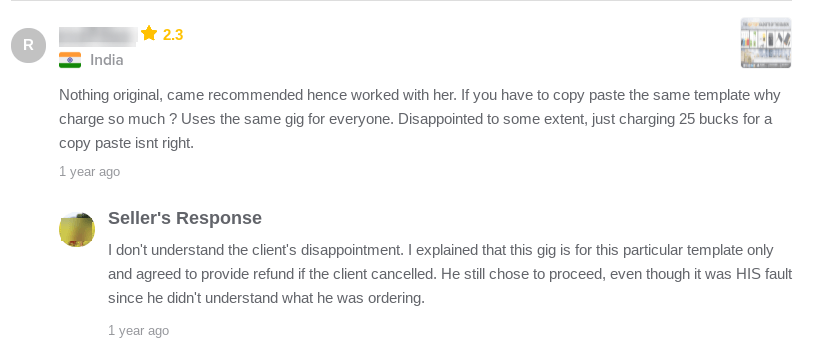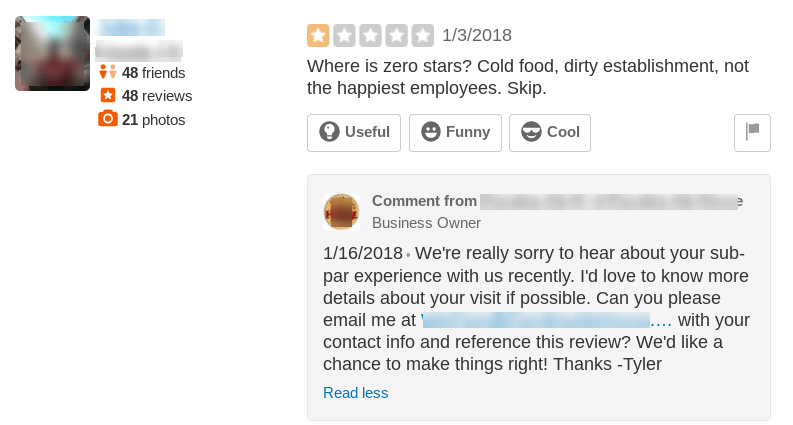You work hard to deliver products and services your customers will be happy with. So it can be frustrating when a client voices their dissatisfaction. More importantly, negative comments could make other potential customers reconsider working with you.
However, there are appropriate ways you can go about handling this feedback. With a few simple strategies, you can deal with the feedback constructively and minimize its effect on future clients.
In this post, we’ll discuss the importance of responding to customer feedback. Then we’ll provide you with some tips for how you can effectively handle negative comments. Let’s get started!
The Importance of Dealing with Customer Feedback
Any individual or business that offers products or services experiences customer feedback. Receiving positive responses to your work is reassuring and feels great. It’s negative feedback that can be difficult to navigate.
However, if you get negative feedback from a client, it’s better to respond than to ignore it. Replying to current and former customers, even the unhappy ones, is a key part of providing quality customer service.
According to research, the majority of consumers around the globe agree that companies should take action on the feedback they get from customers. What’s more, 96 percent of consumers say that customer service influences their loyalty to a brand.
As a WordPress professional, the feedback you receive can either hurt or help your business. While positive reviews can help to establish credibility and promote your services in a favorable light to potential customers, negative comments can do just the opposite if not handled carefully.
How to Appropriately Respond to Negative Client Feedback (5 Key Tips)
When you work in a creative field, such as web design and development, negative feedback is inevitable. However, when dealt with correctly, it’s possible to turn that negative feedback into something a little more positive. Let’s take a look at some tips for appropriately handling unhappy clients.
1. Listen Carefully to Identify the Real Problem
To resolve any issue, you first need a clear understanding of what the problem is. That’s why it’s important to listen carefully to the client, in order to get to the root of their complaint.
Rather than being defensive or dismissive, it’s more productive to attempt to understand where they are coming from. Sometimes, you may need to read between the lines.
Let’s say you’re a WordPress web designer who received a negative but vague review. All the client said was that they “didn’t get the site they asked for”.
You know they’re unhappy, yet you are confident that you followed their requests carefully. In this case, the issue likely translates to a miscommunication about the client’s needs.
Sometimes developers and clients can speak different ‘languages.’ For example, you and your client could have completely different interpretations of what ‘modern design’ means.
Therefore, ask questions if possible to identify exactly where the client’s dissatisfaction stems from. Doing so can help you prevent the same problem from happening with future clients. For example, you may realize it would be beneficial to spend more time clarifying and confirming certain types of requests in the future.
2. Respond Quickly Without Being Reactive
Clients, especially unhappy ones, typically want to feel like they are being heard. Therefore, it’s important to promptly respond to any feedback you get.
It’s natural for anyone to take criticism personally. However, viewing negative client feedback as a personal attack isn’t productive or beneficial. Doing so may lead you to respond in an angry or defensive manner:

Responding politely to customer reviews, both positive and negative, shows former and future clients that you care. It demonstrates a willingness to take the time to address and acknowledge your customers, even the angry ones.
While it’s recommended that you respond in a timely manner, it’s okay to take a few hours (or even a couple of days) to internalize the feedback and plan a suitable response:

Website reviews and social media responses are often public. However, even if you’re speaking with a client through email or private correspondence, it’s best to respond as if the conversation were public (because the client may choose to share your responses).
3. Apologize and Ask Questions
There may be times when you strongly disagree with a client’s critique or feel that it is not an accurate representation of what occurred. Still, a simple apology can go a long way.
Again, when they’re paying for a product or service, it’s important for the client to feel like they are being heard. Apologizing and asking questions helps communicate to the client (and others who may come across the interaction) that you are interested in their satisfaction.
Some example questions you may consider asking include:
- Would you be willing to give us a chance to correct this issue?
- Do you have any suggestions for how we could make this better for you?
- Would you be willing to contact us to provide more clarification on how we can remedy the situation?
- Are there any specific concerns or issues I could help address right now?
Feedback is only as useful as your understanding of it. A client could say they hate their website, but you can’t fix anything unless you know why they don’t like it.
Asking questions can often help to clarify any miscommunications. Additionally, it can give you a better understanding of what actions you could take to prevent the problem from reoccurring with future clients.
4. Offer Proactive Solutions to Correct the Issue
In addition to apologizing and asking questions, you may also consider offering proactive solutions in your response. Suggesting ways to fix the problem helps to further express your authenticity.
When talking directly with clients who gave you negative feedback, whether publicly or privately, you could provide solutions that may help change their opinion of your business. For example, you could offer a service for free or at a discounted rate.
Another option is explaining how you plan to prevent the issue from happening again. For example, you could start by saying how sorry you are about what has happened, mention that it is not representative of your business’ values, and briefly state the specific action you plan to take to resolve it:

There are some cases when fulfilling a client request is unrealistic or impossible. Sometimes it’s okay to correct a client or turn down a request. However, it’s important to do this in a professional and respectful manner and to clearly explain your reasoning.
5. View Negative Feedback as an Opportunity to Improve
In an ideal world, all the client feedback you receive would be positive. However, it’s helpful to consider that both positive and negative feedback can be used to benefit your business.
Negative feedback can enhance the way you communicate with clients in the future. It can also be an effective way to identify areas for improvement.
As a WordPress designer or developer, feedback is essentially never-ending. To make efficient use of it, it’s important to have a way of accepting, organizing, and processing it.
To do this, you could use a tool such as WP FeedBack:

This is a WordPress plugin that lets clients submit feedback on the site you’re designing for them. The client can create specific tasks, which are basically suggestions, directly on the WordPress site.
This helps to facilitate clear communication and feedback during the development process. That way, clients are more likely to be satisfied with the end result.
Conclusion
No matter how many satisfied customers you have, negative feedback is inevitable. However, sometimes these types of comments present you with the opportunity to offer exceptional customer service.
As we discussed in this post, appropriately handling negative feedback can prevent it from deterring potential clients. You can do this by:
- Listening carefully to the client’s feedback, to identify the real problem.
- Responding quickly, but not in an emotional or reactive manner.
- Apologizing with authenticity and asking questions.
- Offering proactive solutions to correct the issue and demonstrate your genuine care.
- Viewing negative feedback as an opportunity to improve your products and services for the future.
Do you have any questions about handling negative feedback from clients? Let us know in the comments section below!
Image credit: Pixabay
The post What to Do When a Client Leaves You Negative Feedback (5 Key Tips) appeared first on Torque.
